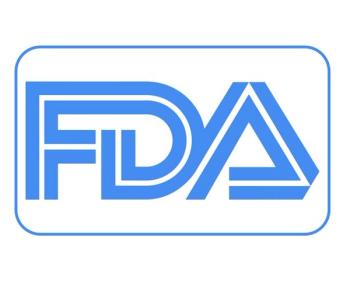
Prescription Opioids and Heroin: What’s the Relationship?
There is no nice straight line between use of prescription opioids and heroin addiction; in fact, the connections aren't really clear at all.
[[{"type":"media","view_mode":"media_crop","fid":"47753","attributes":{"alt":"","class":"media-image media-image-right","height":"385","id":"media_crop_5603029645256","media_crop_h":"0","media_crop_image_style":"-1","media_crop_instance":"5651","media_crop_rotate":"0","media_crop_scale_h":"0","media_crop_scale_w":"0","media_crop_w":"0","media_crop_x":"0","media_crop_y":"0","style":"margin: 8px; float: right;","title":"©Phovoir/Shutterstock.com","typeof":"foaf:Image","width":"254"}}]]From all the media reports, it would be easy to believe that many people who initially abuse and who become addicted to prescription opioids end up using heroin. Exactly how factual this is is open to debate, and the relationship is a far more complex issue than many reports suggest.
First, not all prescription opioid abusers and addicts (the 2 categories are now combined under the DSM-5 diagnosis of Opioid Use Disorder) are the same. The 2 major groups of abusers and addicts are those who:
o Used opioids for nonmedical reasons
o Were initially prescribed opioids for a legitimate pain complaint and then developed problems with the drugs
No literature shows that the latter group goes on to use heroin. I will discuss this group further.
There is some research which shows that some who began using opioids for nonmedical reasons may go on to use heroin. But the evidence of the strength of the association is limited.
A new review has examined the available literature and found that “Studies that address the patterns of heroin use in nonmedical users of prescription opioids are mostly observational and descriptive (ie, nonexperimental). Thus, conclusions about cause and effect are uncertain.”1(p. 156). The article does note that the association between opioid use and heroin is plausible. But the findings that follow here made the authors hesitate to draw further conclusions about the association.
Studies do indicate that many heroin users took prescription opioids for nonmedical reasons before going on to heroin. But studies that have examined heroin use found that fewer than 5% of those who used prescription opioids for nonmedical reasons actually did so.
Also, during the past 10 years while heroin use increased among those who used prescription opioids for nonmedical reasons, so did heroin use among those who took a variety of other prescription medications (eg, tranquilizers and sedatives) for nonmedical reasons. Heroin use also increased among cocaine and marijuana users and binge drinkers.
The review also found a lack of support for the common view that programs aimed at encouraging physicians to prescribe opioids more conservatively caused users to turn to heroin.1 The most common reasons to turn to heroin appear to be its availability and relatively low cost.
What about patients who were prescribed opioids for legitimate pain complaints and who then developed what might be described as iatrogenic opioid use disorder? We really know very little about them.
[[{"type":"media","view_mode":"media_crop","fid":"47756","attributes":{"alt":"","class":"media-image","height":"215","id":"media_crop_3758193790233","media_crop_h":"0","media_crop_image_style":"-1","media_crop_instance":"5652","media_crop_rotate":"0","media_crop_scale_h":"0","media_crop_scale_w":"0","media_crop_w":"0","media_crop_x":"0","media_crop_y":"0","style":"margin: 8px;","title":"©Shutter division/Shutterstock.com","typeof":"foaf:Image","width":"331"}}]]
My sense-shared by my colleagues in pain management-is that few of these patients turn to heroin. With rare exceptions, the prescription opioid users I’ve encountered or read about who went on to heroin had used opioids for nonmedical reasons.
Many who take opioids for pain and who end up misusing them are unaware that what they are doing would be considered abuse or becoming addicted to them. They often continue to use them or increase dosage seeking relief from the pain despite recommendations from their physician to discontinue use because the clinician feels the medications might be making the pain worse or are interfering with functioning. They are especially likely to continue using opioids if their physicians don’t offer alternative methods for dealing with the pain. They may end up lying and trying to convince their doctors they have lost prescriptions or medications, or they make try to get a prescription from different doctors so they can take higher doses.
These patients have always gotten their medications from legal sources. Thus, they are much less likely to have contacted illicit sources for their drugs than those who used prescription opioids for nonmedical purposes.
Although these patients may overdose on the opioids at times, they appear to do so much less frequently than nonmedical users and heroin users. Most people with iatrogenic opioid user disorder don’t suddenly markedly increase the doses of the drugs; as noted, they usually have developed some degree of tolerance. And, unlike heroin or even prescription opioids bought illegally, legitimate prescriptions guarantee drug dosage and purity.
Two articles highlight the lack of recognition that all prescription opioid abusers are not the same. The first is co-written by the Director of the CDC.2 The second is co-written by the director of the National Institute on Drug Abuse.3
[[{"type":"media","view_mode":"media_crop","fid":"47757","attributes":{"alt":"","class":"media-image media-image-right","height":"200","id":"media_crop_6758056428753","media_crop_h":"0","media_crop_image_style":"-1","media_crop_instance":"5653","media_crop_rotate":"0","media_crop_scale_h":"0","media_crop_scale_w":"0","media_crop_w":"0","media_crop_x":"0","media_crop_y":"0","style":"margin: 8px; float: right;","title":"©Mukhina Viktoriia/Shutterstock.com","typeof":"foaf:Image","width":"198"}}]]These two papers highlight the importance of increasing the availability of methadone and buprenorphine for prescription opioid addiction-a strategy recommended by the new CDC guideline on prescription opioids for chronic pain.4 However, neither article mentions the complete lack of research demonstrating whether or not these agents are useful in iatrogenic opioid use disorder.
Substance abuse and addiction is a major problem in this country. It is a positive thing that the subject is getting more media attention and is increasingly being seen as a public health rather than criminal issue. However, it does no one any good to pretend we know more about it than we really do.
References:
1. Compton W, Jones CM, Baldwin GT. Relationship between nonmedical prescription-opioid use and heroin use. N Engl J Med. 2016;374:154-163.
2. Frieden TR, Houry D. Reducing the risks of relief -the CDC opioid-prescribing guideline. N Engl J Med. March 15, 2016. [Epub ahead of print] DOI:10.1056/NEJMp1515917.
3. Volkow ND, McLellan AT. Opioid abuse in chronic pain-misconceptions and mitigation strategies. N Engl J Med. 2016;374:1253-1263.
4. Centers for Disease Control and Prevention.
Newsletter
Enhance your clinical practice with the Patient Care newsletter, offering the latest evidence-based guidelines, diagnostic insights, and treatment strategies for primary care physicians.






















































































































































































































































































